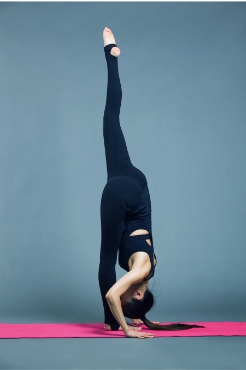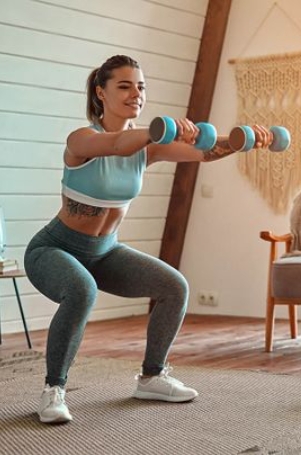Are you ready to get into shape but don’t know how often you should exercise? Many people spend time wondering how many days a week they should work out. It’s a common question that is usually answered with ‘It depends.’ That’s because each of us is unique, and our individual needs vary from person to person.
While there are general recommendations regarding the frequency of exercise, what works best for one person may not be ideal for another. To help guide your fitness journey, this Science Guide provides an in-depth look at the current research regarding how often to work out and practical tips on setting up an optimal fitness plan tailored to your personal needs and goals.
Table of Contents:
- Part 1: Understanding Exercise Frequency
- Part 2: Factors influencing optimal exercise frequency
- Part 3: Recommendations Based on Goals
- Part 4: The Role of Rest and Recovery
- Part 5: The Importance of Variety
- Part 6: Listening to Your Body
- Part 7: Common Myths
Understanding Exercise Frequency
 Most health and professional organizations are in general agreement when it comes to the recommendation of how often one should exercise: at least 150 minutes of moderate-intensity aerobic activity or 75 minutes of vigorous-intensity physical activity a week, spread over three days or more, and within an overall healthy diet plan. From this baseline recommendation, it is useful to look deeper into the frequency with which physical activity can be done to achieve optimal results.
Most health and professional organizations are in general agreement when it comes to the recommendation of how often one should exercise: at least 150 minutes of moderate-intensity aerobic activity or 75 minutes of vigorous-intensity physical activity a week, spread over three days or more, and within an overall healthy diet plan. From this baseline recommendation, it is useful to look deeper into the frequency with which physical activity can be done to achieve optimal results.
Exercising four to six times per week offers the most consistent, sustainable gains for both beginners and experts alike. Aiming for shorter bouts throughout the day may offer more effective results than just trying to squeeze all your sessions into one major block – Position Statement on Exercise Frequency. When it comes specifically to strength training, twice-weekly workouts are sufficient, although three times may provide even better outcomes depending on individual fitness goals. Plus there’s evidence that regular strength training might help reduce atrophy due to age-related sarcopenia (the natural loss of muscle mass during aging).
When creating an exercise plan tailored towards your individual needs, paying attention not just to how often you do something but also considering “how much” can go a long way in ensuring you reach top-lasting peak performance levels without unnecessary strain!
Factors influencing optimal exercise frequency
 Research on exercise frequency continues to evolve, so understanding the factors that influence the amount and type of physical activity should be considered. Below, we explore real-world examples of lifestyle, existing skills, and current fitness levels.
Research on exercise frequency continues to evolve, so understanding the factors that influence the amount and type of physical activity should be considered. Below, we explore real-world examples of lifestyle, existing skills, and current fitness levels.
-
Age
Age can have a major effect on one’s ability to handle different levels of workload.
Young adults are more equipped with lower recovery times and will fare better from frequent physical activities than their seniors but depending on overall health people of all ages can still benefit from regular exercising. Some fared better when working out three times per week while others peaked at 2 or 4x per week!
-
Fitness Level & Goals
More experienced athletes may feel comfortable stepping it up when compared to newbies when it is about picking up a personal training plan. For example, someone new doing HIIT could start exploring more two-a-week sessions once they become efficient at mastering movement mechanics coupled with optimal awareness and breathing patterns since this helps ensure safe correct form when going full tilt. While somebody with above average level can perform HIIT up to 6x times a week.
Some individuals may find it beneficial to perform minutes of cardio a few days per week if they want to stay fit and maintain health. Someone trying to get sculpted might prefer an engaging total-body workout several times for each performable task, depending on what targets they seek to reach. A general recommendation would include twice-a-week weight training sessions combined with daily low-intensity cardio activity!
Recommendations Based on Goals
 When you understand these factors, it’s possible to start making some meaningful decisions about how often to exercise to reach your fitness goals and objectives. Here are a few specific recommendations for optimizing both recreational and competitive workouts:
When you understand these factors, it’s possible to start making some meaningful decisions about how often to exercise to reach your fitness goals and objectives. Here are a few specific recommendations for optimizing both recreational and competitive workouts:
- If you’re new to exercise, experiment with three days of moderate-intensity exercise per week and gradually increase as your body adapts.
- For weight training specifically, consider using other days for dynamic stretching or yoga versus overworking the same muscle groups daily. This will help prevent fatigue or injuries while still allowing progress toward stronger muscles!
- HIIT workouts might be better suited for those focused on developing their aerobic capacity rather than just strength – work out twice a week to start, then slowly add in more sessions if needed.
No matter what kind of workout plan you decide is best for you — whether it’s three intense sessions per week or spread out five low-impact ones. What’s essential is to find methods to enjoy while doing them so as to stay committed to consistent long haul easier.
The Role of Rest and Recovery
 Yoga, meditation, and other forms of rest can play a major part in your exercise plan—especially when it comes to recovery. Following a workout, our bodies require an opportunity for recovery so that the muscles can rebuild themselves stronger than before!
Yoga, meditation, and other forms of rest can play a major part in your exercise plan—especially when it comes to recovery. Following a workout, our bodies require an opportunity for recovery so that the muscles can rebuild themselves stronger than before!
This means taking up physical activities that will allow proper oxygen flow — like stretching, foam rolling, or light cardio exercises such as walking – so that energy is effectively replenished while regenerating soreness during off-workout days.
It’s important to get plenty of mental relaxation, too—whether through art projects or reading—as this helps create harmony between our minds and our bodies, which encourages increased stamina and improved readiness skill sets. The next required activity whenever the recommended optimal resting scheduling usually falls around one each week is the exercise.
Optimizing all aspects of the method actually leads to a higher rate of satisfaction among exercisers, who achieve measurable results more quickly than those who don’t adopt a similar strategy.
The Importance of Variety
 The best advice for creating the optimal exercise frequency routine for yourself is to focus on variety.
The best advice for creating the optimal exercise frequency routine for yourself is to focus on variety.
Trying different types of workouts can help break up monotony and keep motivation high. Plus it will make progress towards goals much easier since you’ll be able to tailor specific exercises to target and/or challenge specific muscle groups more often!
If weight loss or toning is a goal, then adding in aerobic activities like running could greatly accelerate caloric burn. Meanwhile, strength or interval training is better suited for increasing endurance or power levels during HIIT sessions, etc. Mixing activities offers a higher rate of success than traditional single sport routines because it helps generate interest and motivation through both mental and physical fatigue which usually equates to widely accepted albeit not always said truth – Essentially becoming fit requires us first mentally prepared to take necessary steps to achieve that end.
Listening to Your Body
At the end of the day, it’s essential to recognize that each person’s optimal exercise frequency differs due to individualized factors such as existing health needs and available resources. One way to help your body decide how often you should work out is by tracking physical reactions before and after activities.
For instance, does exercise make you feel overly tired, or do you find yourself easily fatigued afterward? Do certain muscles remain tight throughout? If so, then this could be a signal that workouts need to either spread out more or take more rests during week consecutive sessions becoming intensified instead.
Common Myths
-
 “You should exercise every day”
“You should exercise every day”
While it’s perfectly reasonable to exercise multiple times during the week, it’s not safe or recommended for people to work out every day! There needs to be at least 48 hours of rest between moderate or high-intensity workouts as this is when your body repairs and re-energizes itself. Failing to do so can lead to fatigue, reduced performance, or even injury from overtraining!
-
“Working out will make you gain weight faster”
This isn’t true! Exercise can actually help speed up metabolism, which helps burn calories faster throughout the day. This helps you stay in shape and reach your fitness goals more effectively than if you didn’t work out at all.
Key Takeaways
Everyone responds differently to how they exercise. Depending on your fitness goals and existing activity levels, it is important to determine what type of exercises are best suited for you and how often those activities should take place.
The best approach is to find a routine that strikes a balance between rest days and active days — one that allows your body time to recover while still providing an effective workout regimen.
Now that you’ve gained insight into creating your own optimal exercise frequency plan, it’s time to take action! Take a moment to reflect on what type of exercises are right for you, how often, and at what intensity.
Don’t be afraid to experiment with different workout routines and change one to another from time to time. If you are competing, it should be strict, but in this case, for most fitness enthusiasts, you are free to vary your routine depending on your current goals and your level of joy. Remember, the best way to be consistent and get amazing results is to take pleasure from the activity.

 By myulikeadmin
By myulikeadmin



